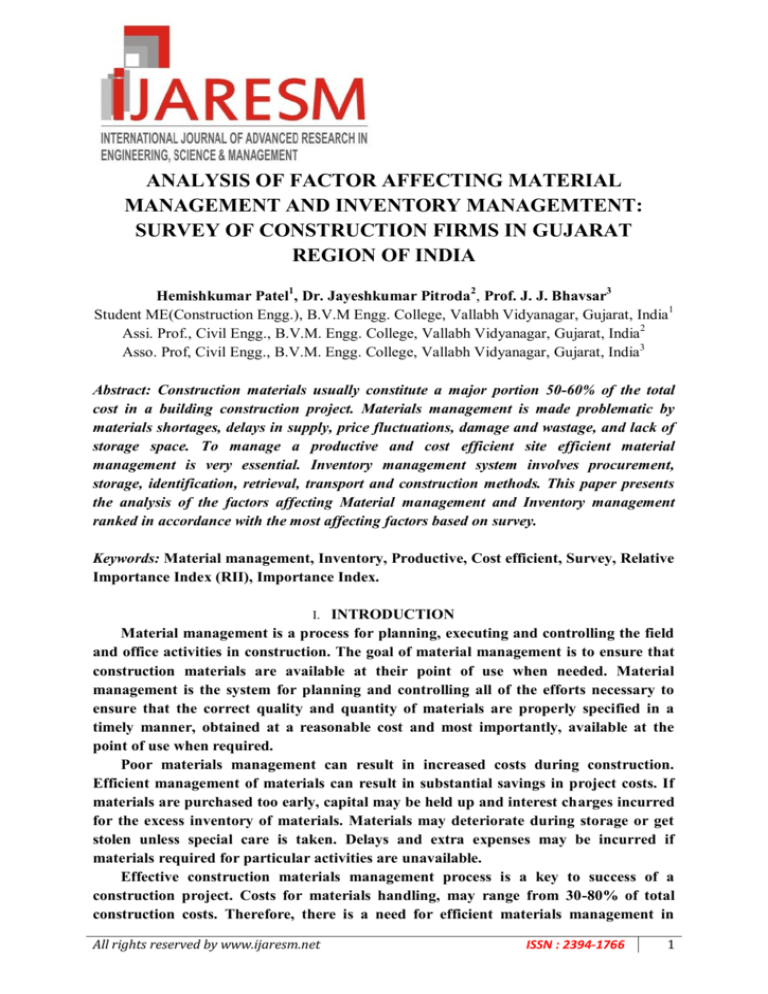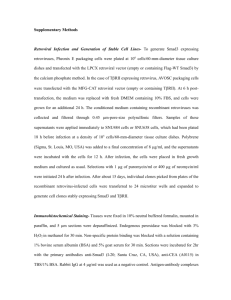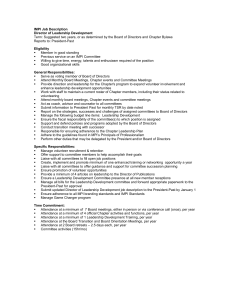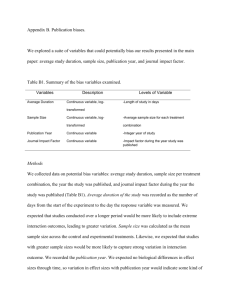
ANALYSIS OF FACTOR AFFECTING MATERIAL
MANAGEMENT AND INVENTORY MANAGEMTENT:
SURVEY OF CONSTRUCTION FIRMS IN GUJARAT
REGION OF INDIA
Hemishkumar Patel1, Dr. Jayeshkumar Pitroda2, Prof. J. J. Bhavsar3
Student ME(Construction Engg.), B.V.M Engg. College, Vallabh Vidyanagar, Gujarat, India1
Assi. Prof., Civil Engg., B.V.M. Engg. College, Vallabh Vidyanagar, Gujarat, India2
Asso. Prof, Civil Engg., B.V.M. Engg. College, Vallabh Vidyanagar, Gujarat, India3
Abstract: Construction materials usually constitute a major portion 50-60% of the total
cost in a building construction project. Materials management is made problematic by
materials shortages, delays in supply, price fluctuations, damage and wastage, and lack of
storage space. To manage a productive and cost efficient site efficient material
management is very essential. Inventory management system involves procurement,
storage, identification, retrieval, transport and construction methods. This paper presents
the analysis of the factors affecting Material management and Inventory management
ranked in accordance with the most affecting factors based on survey.
Keywords: Material management, Inventory, Productive, Cost efficient, Survey, Relative
Importance Index (RII), Importance Index.
I. INTRODUCTION
Material management is a process for planning, executing and controlling the field
and office activities in construction. The goal of material management is to ensure that
construction materials are available at their point of use when needed. Material
management is the system for planning and controlling all of the efforts necessary to
ensure that the correct quality and quantity of materials are properly specified in a
timely manner, obtained at a reasonable cost and most importantly, available at the
point of use when required.
Poor materials management can result in increased costs during construction.
Efficient management of materials can result in substantial savings in project costs. If
materials are purchased too early, capital may be held up and interest charges incurred
for the excess inventory of materials. Materials may deteriorate during storage or get
stolen unless special care is taken. Delays and extra expenses may be incurred if
materials required for particular activities are unavailable.
Effective construction materials management process is a key to success of a
construction project. Costs for materials handling, may range from 30-80% of total
construction costs. Therefore, there is a need for efficient materials management in
All rights reserved by www.ijaresm.net
ISSN : 2394-1766
1
IJARESM
order to control, productivity and cost in construction projects. The review has been
carried out to explore the local practice in the construction materials management and
develop a construction materials management system to facilitate the management of
construction materials mainly in the building construction.
II. OBJECTIVES OF STUDY
This paper has an objective to act as a foundation for future studies and its results will
become worthwhile information in efforts to improve the Material management practicies in
the construction industry. To rank causes of delay by RII (Relative Importace Index) and
IMP.I. (Imporance Index) method.
III. RESEARCH METHODOLOGY
The data collected to determine the most influential factors on Material management of
the project was done through a survey by explorative questionnaire to the respondents
involved in daily activities of construction firms in various regions in the Gujarat region of
India. The questionnaire was designed so that respondents can give the rank to their answers
based on the Likert scale. The analysis of these data was done by a method named relative
importance index (RII) method as well as statistical methods using the statistical package for
the social sciences (SPSS) Software.
IV. DATA COLLECTION
The target population included civil engineering and buildings firms of central region of
India. The conactors, project engineers, store incharge and site supervisors of various city of
Gujarat were targeted for survey. The details of various stakeholders and total numbers of
were collected through internet. These details were considered as size of population to decide
sample size of study. To obtain a satistically representative sample of the population, the
formula shown in Eq (1) ws used.
n=
………(1)
where n,m and N = the sample size of the limited, unlimited and available population,
respectively. m is estimated by Eq. (2)
m=
………(2)
where z = the statistic value for the confidence level used, i.e. 2.575, 1.96 and 1.645, for 99%,
95% and 90% confidence levels, respectively; p = the value of the population proportion that
us being estimated , and e = the sampleing error of the point estimate. Because the value of p
is unknown, Sincich et al. (2002)[14] suggest a conservative value of 0.50 be used so that a
sample size that is at least as large as required be obtained. By using 90% confidence level,
i.e., 10% significance level, the unlimited sample size of the population, m, is approximated
as follows:
m = 67.65
All rights reserved by www.ijaresm.net
ISSN : 2394-1766
2
IJARESM
Accordingly, for the total number of stackholders as per detail available through internet, i.e.,
N = 1129, the representative sample size of the population required, is determined as shown
below:
n = 63.88
n 64
As the response rate is always low, the questionnaire was distributed to various stakeholders
more than the sample size requirement. Total 96 questionnaires were distributed to different
respondents in Surat, Bardoli, Navsari and Ahmedabad. They were sent the reminder for
sending their feedback after 10 to 15 days of sending the questionnaire. This study received
80 responces. So, the response rate (as compare to sample size = 64) is in this research is
126%, which is considered as very good in this kind of survey research.
The follwings two types of approach should be used for data analysis.
A.
Relative Importance Index technique
Relative Importance Index method is used determine the relative importance of the various
causes and effects of delays. The same method is going to adopted in this study within
various groups (i.e. contractors, project engineers, store incharge and site supervisor). The
four-point scale ranged from 1 (vey little degree affect) to 5 (very high degree affect) is
adopted and transformed to relative importance indices (RII) for each factor as follows:
……….(5)
Where, W is the weighting given to each factor by the respondents (ranging from 1 to 5), A is
the highest weight (i.e. 5 in this case), and N is the total number of respondents. Higher the
value of RII, more important was the cause of delays.
B. Importance Index technique
In this technique, for each cause/factor two questions were asked: What is the frequency of
occurance for this cause? And what is the degree of severity of this cause on project delay?
Both frequency of occurance and severity were categorized on a four-point scale. Frequency
of occurance is categorized as follows: always, often, sometimes and rarely (on 4 to 1 point
scale). Similarly, degree of severity was categorized as follows: extreme, great, moderate and
little (on 4 to 1 point scale).
1) Frequency index: A formula is used to rank causes of delay based on frequency of
occurance as identified by the participants.
Frequency Index (F.I.) (%) = ∑ a (n/N) * 100/4 ……….(4)
Where, a is the constant expressing weighting given to each response (ranges from 1 for
rarely up to 4 for always), n is the frequency of the responses, and N is total number of
responses.
2) Severity index: A formula is used to rank causes of delay based on severity as indiacated
by the participants.
Severity Index (S.I.) (%) = ∑ a (n/N) * 100/4 ………(5)
Where a is the constant expressing weighting given to each response (ranges from 1 for
little up to 4 for severe), n is the frequency of the responses, and N is total number of
responses.
All rights reserved by www.ijaresm.net
ISSN : 2394-1766
3
IJARESM
3) Importance index: The importance index of each cause is calculated as s function of both
frequency and severity indices, as follows:
Importance Index (IMPI) (%) = [F.I. (%) * S.I. (%)]/100
………(6)
A total number of 80 respondents were surveyed from the Gujarat region, namely cities like
Ahmedabad, Bardoli, Navsari and Surat out of which 25 respondents were contractors, 21
were Project Engineers, 16 were Store Incharge and 18 were Site Supervisors. A ranking of
the factors was achieved from the Relative Importance Index (RII) method and statistical
package for the social sciences software (SPSS). Also ranking comparision between
contractors, project enginer, store incharge and site supervisor are shown below.
V. RESULTS AND FINDINGS
The all ranking indices explained earlier were used to rank factor affecting material
management and inventory management from viewpoints of the contactors, project
enginners, store incharge and site supervisor. These respondents included 25 contactors, 21
project enginners, 16 store incharge and 18 site supervisor.
A. Top 10 causes ranked by Relative Importance Index (RII) technique (based on all
respondent):
The relative importance index, RII, was computed for each cause to identify the most
significant causes. The causes were ranked based on RII values. From the ranking
assigned to each cause of delays, it was possible to identify the most important factors or
causes of delays in Indian construction industry.
Base on the ranking, the 10 most important causes of material management by RII were:
(1) Misunderstanding of owner`s requirements by design engineer.[RII=0.6975];
(2) Poor quality of materials.[RII=0.6850];
(3) Unclear and in adequate details in drawings.[RII=0.6775];
(4) Poor use of advanced engineering design software.[RII=0.6775];
(5) Poor quality site documentation.[RII=0.6750];
(6) Underestimation of complexity.[RII=0.6550];
(7) Mistakes and delays in project design documents.[RII=0.6525];
(8) Design errors.[RII=0.6550];
(9) Lack of materials.[RII=0.6550];
(10) Poor communication.[RII=0.6475]
Base on ranking, for inventory management by RII were:
(1) A responsible official authorizes purchase.[RII=0.6250];
(2) You pay maximum attention to those inventories whose value is highest.[RII=0.6000];
(3) Goods are inspected on receipt.[RII=0.5975];
(4) All store staff are highly skilled.[RII=0.5750];
(5) Experiences under stock situations.[RII=0.5650];
(6) Get damaged goods from it stored.[RII=0.5575]
B. Top 10 causes ranked by Importance Index (IMPI) technique (based on all respondent)
The importance index of each cause is calculated as a product of both frequency and
severity indcies. Based on the ranking, the 10 most important causes of material
management by IMPI were:
(1) Design errors.[IMPI=65.2559];
All rights reserved by www.ijaresm.net
ISSN : 2394-1766
4
IJARESM
(2) Unclear site drawing supplied.[IMPI=54.1602];
(3) Waste from uneconomical shape.[IMPI=50.9883];
(4) Unclear and inadequate details in drawings.[IMPI=50.0879];
(5) Slow
response
from
the
consultant
team
inquiries.[IMPI=50.0117];
(6) Unclear specification.[IMPI=49.3203];
(7) Space.[IMPI=49.2168];
(8) Shortage of unskilled labour.[IMPI=49.2129];
(9) Price and Contract.[IMPI=48.7813];
(10) Insufficient data collection.[IMPI=48.7754]
Base on ranking, for inventory management by IMPI were:
(1) A responsible official authorizes purchase.[IMPI=44.0781];
(2) Goods are inspected on receipt.[IMPI=43.8867];
(3) You pay maximum attention to those inventories
highest.[IMPI=52.1016];
(4) All store staff are highly skilled.[IMPI=43.8555];
(5) Experiences under stock situations.[IMPI=38.2852];
(6) Get damaged goods from it stored.[IMPI=45.7324]
to
whose
contractor
value
is
VI. SUMMARY
It is studied through field survey. It should frequency, severity and importane of the
material management. The importance index of each cause is calculated as a product of both
frequency and severity indices of each cause. 78 causes were identified through research. The
field survey included 25 contractors, 21 project engineers, 16 store incharge and 18 site
supervisor. Data collected were analyzed by frequency, severity importance and relative
importance. Results shows that out of top 10 factors total 2 factors were common in ranking
by both methods.they were design errors and unclear and inadequate details in drawings. It is
hoped that the findings of the paper will help the stakeholders to act on material management
and invenotory management to reduce it in their projects.
ACKNOWLEDGMENT
The Authors thankfully acknowledge to Dr. C. L. Patel, Chairman, Charutar Vidya Mandal,
Er. V. M. Patel, Hon. Jt. Secretary, Charutar Vidya Mandal, Mr. Yatinbhai Desai, Jay
Maharaj construction, Dr. F.S.Umrigar, Principal, B.V.M. Engineering College, Dr. L. B.
Zala, Head and Professor, Civil Engineering Department, Prof. J. J. Bhavsar, Associate
Professor, Civil Engineering Department, B.V.M. Engineering College, Vallabh Vidyanagar,
Gujarat, India for their motivations and infrastructural support to carry out this research.
REFERENCES
[01] Dennis Daina R. and Meredith Jack R., “An analysis of Process Industry Production and
Inventory Management Systems”, Journal of Operations Management, 18 (2000) 683699
[02] Eckert Scott Grant, “Inventory Management and Its Effects on Customer satisfaction”,
Journal of Business and Public Policy, Volume-1 Number-3, Summer 2007, 1936-9794
All rights reserved by www.ijaresm.net
ISSN : 2394-1766
5
IJARESM
[03] Feng Q., Gallego G., Sethi S. P. and Yan H., Zhang H., “Periodic Review Inventory
Model with Three Consecutive Delivery Modes and Forecast Updates”
[04] Gulsen Aydin Keskin and Coskun Ozkan, “Multiple Criteria ABC Analysis with FCM
Clustering”, Journal of Industrial Engineering, Volume 2013, 87274
[05] Kasim N.B., Anumba C.J. and Dainty A.R.J., “Imroving Material Management Practices
on Fast Track Moving Construction Projects”, 21st Annual ARCOM Conference,
September-2005, 793-802
[06] Kasim Narimah, “ICT Implementation for Materials Management in Construction
Projects : Case studies”, Journal of Construction Engineering and Project Management,
2011, 2233-9582
[07] Kasim Narimah, Liwan Siti Radziah, Shamsuddin Alina, Zainal Rozlin and Kamaruddin
Naadira che, “Improving on Site Material Tracking for Inventory Management in
Construction Projects”, Proceedings International Conference of Technology
Management, Business and Entrepreneurship, 2012
[08] Kuo En Fu, Wei Zhen Chen, Lon Chen Hung and ShihSen Peng, “An ABC Analysis
Model for The Multiple Products Inventory Control”, Proceedings of the Asia Pacific
Industrial Engineering & Management Systems Conference, 2012
[09] Patil Ashwini R. and Pataskar Smita J., “Analysing Material Management Techniques on
Construction Project”, International Journal of Engineering and Innovative Technology,
Volume-3 Issue-4, October 2013, 2277-3754
[10] Patel Khyomesh V. and Prof. Chetna M. Vyas, “Construction Material Management on
Project Site”, National Conference on Recent Trends in Engineering & Technology,
May-2011
[11] Patel Hemish A, Jayeshkumar Pitroda and J. J. Bhavsar, “A Review on Material
Management through Inventory Management “, Journal of International Academic
Research for Multidisciplinary, Volume-2 Issue-12, January 2015, 2320-5083.
[12] Sahari Salawati, Tinggi Michael and Kadri Norlina, “Inventory Management in
Malaysian Construction Firm: Impact on Performance”, SIU Journal of Management,
Volume-2 Number-1, June 2012, 2229-0044
[13] Sindhu S., Dr. K. Nirmalkumar and Krishnamoorthy V., “Performance Analysis of
Inventory Management System in Construction Industry in India”, International Journal
of Innovative Research in Science, Engineering and Technology, Volume-3 Issue-4,
April 2014, 2319-8753
[14] Vaisakh P.S., Dileeplal J. and Narayanan Unni, “Inventory Management of Spare Parts
by Combined FSN and VED (CFSNVED) Analysis”, International Journal of
Engineering and Innovative Technology, Volume-2 Issue-7, January 2013, 2277-3754
All rights reserved by www.ijaresm.net
ISSN : 2394-1766
6







